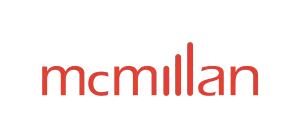- within Law Department Performance, Insolvency/Bankruptcy/Re-Structuring and Criminal Law topic(s)
- with Senior Company Executives, HR and Finance and Tax Executives
- with readers working within the Accounting & Consultancy, Banking & Credit and Insurance industries
In the recent decision Transport CJZ inc. c. Ministre de l'Environnement, de la Lutte contre les changements climatiques, de la Faune et des Parcs,1 the Administrative Tribunal of Québec ("ATQ") quashed three notices of claim totalling more than $230,000 issued against Transport CJZ by the Minister for clean-up and restoration costs following a hydrocarbon spill in Lac Bouchette, located in the Saguenay–Lac-Saint-Jean region. This decision provides important clarifications on the conditions for the recovery of environmental intervention costs when there are multiple sources of contamination. More specifically, the ATQ held that when there are multiple sources of contamination, the Ministry (that is, the Ministère de l'Environnement, de la Lutte contre les changements climatiques, de la Faune et des Parcs, hereinafter the "Ministry") must be able to prove each party's respective share of liability in order to claim environmental intervention costs from them.
On May 14, 2020, following an anonymous report, the authorities discovered a hydrocarbon spill in Lac Bouchette. The preliminary inspection revealed significant contamination along approximately 225 metres of shoreline, affecting roughly a dozen properties bordering the lake.2 The Ministry quickly appointed a specialized company to carry out work for the containment and recovery of contaminants. A total of 606 metric tonnes of contaminated soil were excavated.3
Sections 115.0.1 and 115.1 of the Environment Quality Act4 give the Ministry authority to act in place of responsible parties and to intervene directly when contaminants are released into the environment. Under these provisions, the Ministry can take all necessary measures to clean, collect or contain contaminants when such measures are required to avert or diminish a risk of adverse effects on the environment or public health. The Ministry can then claim the direct and indirect costs of its intervention from the person who has (or had) custody or control of the contaminants, or who is responsible for their release into the environment. The Ministry bears the burden of proving the identity of the liable party on a balance of probabilities.5
In this context, the Ministry first singled out Transport CJZ inc., a heavy haulage company with a garage next to the lake, as being solely liable.6 Key to this conclusion was the presence of a very strong diesel odour on the company's property, the fact that the soil next to the garage was visibly contaminated, and the presence of a gully running towards the lake.[7] The Ministry thus issued an initial notice of claim totalling approximately $42,000 for clean-up, restoration and soil characterization costs. Two further notices of claim were then issued, bringing the total to more than $230,000.8
However, a subsequent investigation by the Ministry revealed that the situation was more complex. Although the presence of contaminants in the environment and the need for the Ministry to intervene were not disputed, Transport CJZ contested the finding that it had custody or control of the contaminants released into the lake.9 In fact, a neighbouring garage, Garage Boulianne, had been identified as a potential source of contamination, in particular through its storm sewer system that emptied into the lake.10 Moreover, the Ministry had issued a notice of non-compliance to Garage Boulianne in June 2020 for having released a hazardous material (hydrocarbons) into the environment and into a sewer system in breach of the Regulation respecting hazardous materials.11
In its contestation of the notices of claim, Transport CJZ thus argued that Garage Boulianne was solely liable for the spill.
Analysis of Transport CJZ's premises confirmed the presence of weathered diesel fuel, with evidence of run-off into the lake.12 Soil samples taken near the garage revealed petroleum hydrocarbon contamination, with a weathered diesel fuel profile and traces of heavy hydrocarbons.13 Tests on Garage Boulianne's property revealed significant contamination, consisting of a mixture of weathered diesel fuel and heavy hydrocarbons, which appeared to have spread to the lake via the storm sewer system.14 The evidence further showed that there had indeed been a diesel leak in the Boulianne Garage's yard during the winter of 2020.15
Samples taken from Lac Bouchette exhibited properties consistent with the contamination patterns from the two premises.16 The ATQ therefore undertook a thorough analysis of the expert reports and inspection reports, reports which suffered from a number of significant methodological weaknesses. Among other things, the Minister's expert failed to analyse certain critical factors, such as the similarity between the contaminants found in the soil at the Boulianne Garage and those taken from the lake,17 and they did not perform a complete analysis of the degradation profiles of the hydrocarbons found at the two premises.18 In addition, the Minister's inspector's initial checks of the storm ditch were found to be inadequate.19
The Tribunal concluded that, on a balance of probabilities, the hydrocarbons that had reached the lake in May 2020 were released from two separate sources, thus establishing that the spill from Transport CJZ was not the only source of contamination.20 As the Minister had failed to bring any evidence of Transport CJZ's share of liability, the Tribunal quashed all the notices of claim issued against Transport CJZ, concluding that one of the contributing parties could not be held liable for all the clean-up costs where several sources of contamination had been identified.21
This decision establishes an important principle regarding the recovery of environmental clean-up costs in Québec by the Ministry under the Environment Quality Act, it is not sufficient to simply identify a source of contamination; it is also necessary to determine the share of each liable party's contribution to the contamination. Over and above its legal importance, this decision also offers several practical insights for companies confronted with environmental incidents:
- The importance of promptly documenting all environmental incidents, even minor ones;
- The benefits of carrying out one's own analysis and sampling in the event of an incident; and
- The relevance of checking for other possible sources of contamination.
Footnotes
1. 2024 QCTAQ 04481.
2. Transport CJZ inc. Ministre de l'Environnement, de la Lutte contre les changements climatiques, de la Faune et des Parcs, 2024 QCTAQ 04481, at para. 13.
3. Ibid. at para. 23.
4. CQLR c. Q-2.
5. Transport CJZ c. Ministre de l'Environnement, de la Lutte contre les changements climatiques, de la Faune et des Parcs, supra note 1 at para. 46.
6. Ibid. at para. 4.
7. Ibid. at paras. 60 to 80.
8. Ibid. at paras. 34 to 37.
9. Ibid. at paras. 45 to 47.
10. Ibid. at para. 30.
11. CQLR c. Q-2, r. 32; Transport CJZ inc. Ministre de l'Environnement, de la Lutte contre les changements climatiques, de la Faune et des Parcs, supra note 1 at para. 32.
12. Ibid. at para. 66.
13. Ibid. at paras. 76 to 80.
14. Ibid. at paras. 108 to 117.
15. Ibid. at paras. 122 to 123.
16. Ibid. at paras. 76 and 167.
17. Ibid. at paras. 166 to 172.
18. Ibid. at paras. 181 to 182.
19. Ibid. at para. 188.
20. Ibid. at para. 191.
21. Ibid. at para. 192.
The foregoing provides only an overview and does not constitute legal advice. Readers are cautioned against making any decisions based on this material alone. Rather, specific legal advice should be obtained.
© McMillan LLP 2025



